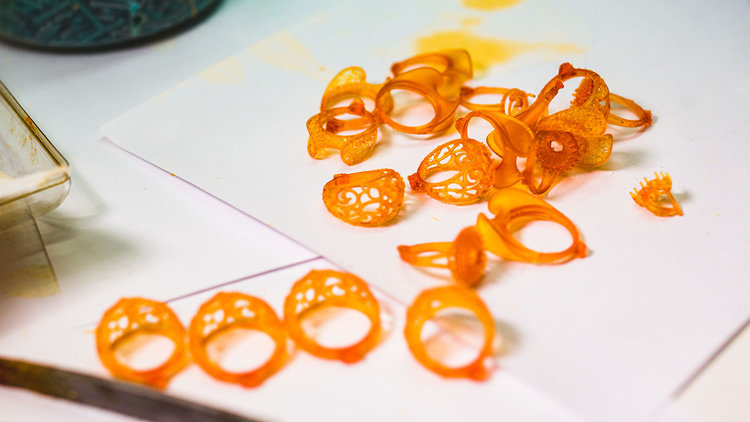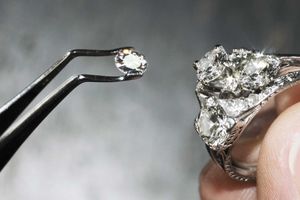Just recently, a three-dimensional computer image seemed to us something fantastic. Gradually, animation and three-dimensional modeling began to be used not only in the field of cinema and computer games, but also in architecture, science, medicine, industry and, of course, jewelry production.
3D-modeling, with which realistic 3D objects are created, allows you to "revive" any ideas of artists. We will tell you about the work of the studio
VIDEO: 3D MODEL
3D-modelers have appeared at jewelry enterprises relatively recently, but have already become irreplaceable specialists. These are real wizards who erase the boundaries between two-dimensional and three-dimensional space.
And seriously, 3D-designers are unique specialists who know the skills of designers, they are able to work with the latest computer programs and high-tech equipment and know the technology of jewelry production.
3D Modeling performed with programs such as Rhinoceros / Matrix, Zbrush has a high level of accuracy and the ability to implement the most unusual designs in jewelry design, which allows you to evaluate the final result even at the modeling stage and, if necessary, to make changes to the model.
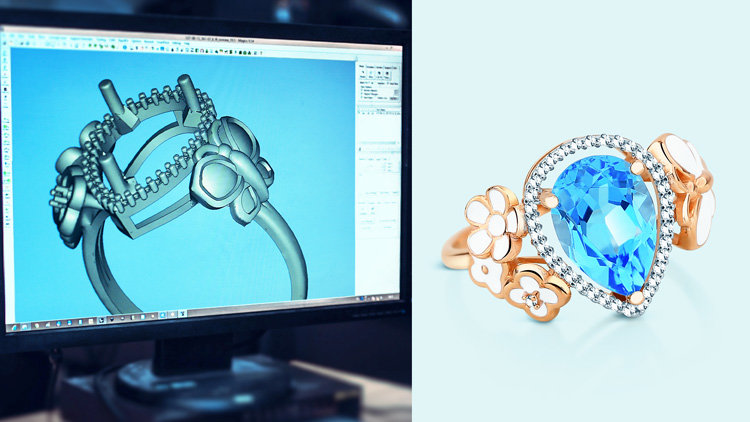
3D-modelers are people from whom a difficult but very interesting process of transforming a painted model into a real piece of jewelry begins,
FROM THE DRAWING - TO THE MODEL
If you think that with the approval of the sketch the artist's work ends, you are mistaken. In order for the ornament painted on paper to be the way the author intended, the creation of its three-dimensional model takes place in close cooperation between the artist and the 3D-designer.
Having received detailed technical drawing, the designer loads it into 3D-editors. It is in them with the help of various tools and creates an ornament - a large copy of the sketch drawn by the artist.
The basis of the future virtual model most often resembles a piece of plasticine. However, it all depends on the program that the designer uses - in a number of 3D editors, volumetric images are created using lines and thousands of polygons.
In order to fully convey the idea of the artist, a computer modeling expert directly in the program imposes a transparent sketch on the 3D image. Thanks to this, it is possible to repeat each line and make the model as accurate as possible.
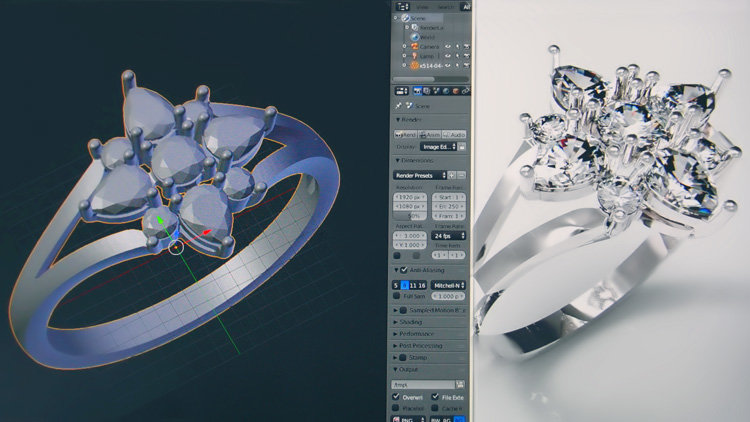
In the process of work, the artist can make adjustments, add or remove individual elements. The author of the decoration evaluates the three-dimensional image from the point of view of the overall aesthetic impression, but all technical nuances are controlled by the 3D-designer.
The designer should be guided not only by the sketch, but also take into account some technical characteristics, without observance of which it will be impossible to cast an ornament in gold or silver. These parameters include, for example, the thickness of the metal, the diameter of the stones, their arrangement, etc. All such adjustments to the 3D modeler are given by the technologist of jewelry production.
So, the process of creating a three-dimensional model allows you to anticipate in advance possible "pitfalls" and correct the shortcomings that can occur when casting products from metal. This makes it possible to produce jewelry of the most unusual design.
PROTOTYPTING
A computer file with a jewelry model is stored in a universal format, after which it is transferred for prototyping - that is, creating a real rather than a virtual model of decoration using 3D printing.
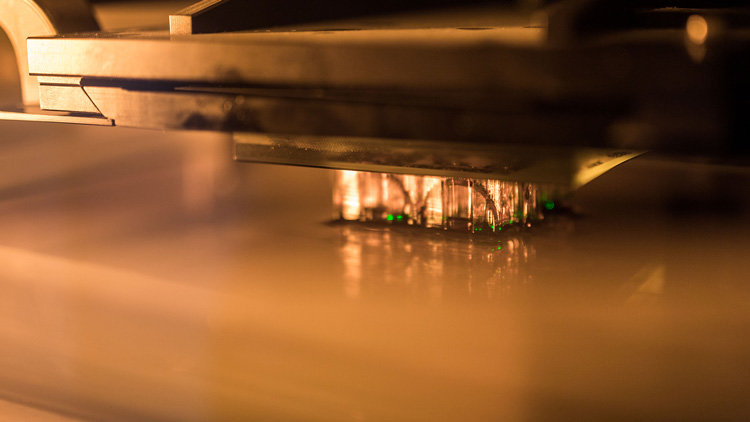
For this, a polymer or wax printer is used. Before the advent of modern equipment designers made a prototype of the future product by hand, which took much more time and effort. In addition, three-dimensional printing allows you to identify the smallest drawbacks, which on sketches is simply impossible to notice. How does a 3D printer work?
The principle of operation of this equipment is similar to ordinary office equipment, only instead of ink cartridges - wax or polymer, and instead of a flat image - a three-dimensional figure. The resulting models are located on a virtual table, after which they are "grown" using a polymer or wax (depending on the type of printer).
For the prototyping of models, we use equipment with the technology of SAS (Sliding-And-Separation), resulting in minimal support structures and the best in the industry surface quality.
As a model material, photopolymeric wax is used for layered 3D printing, which is heated (not burnt!) As a conventional injection wax (melting point 55 ° C), which allows not only to obtain high quality surfaces and maximum speed of prototype construction, but also to model the model Bypassing any special cycles of calcination of the flasks in the muffle furnace.
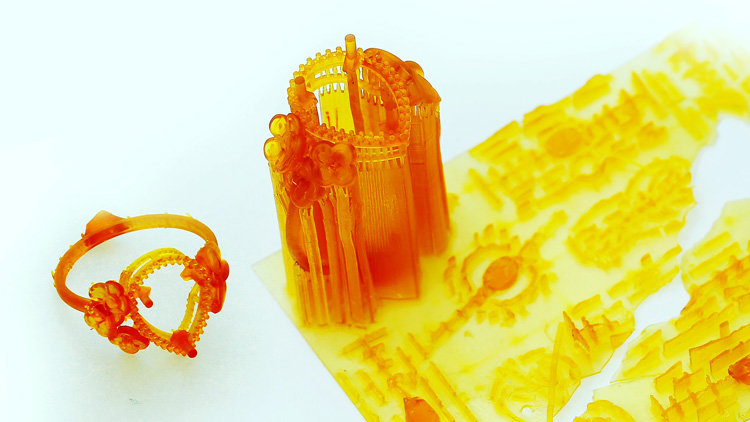
The wax printer uses two types of material: support and construction. With the help of the latter layer by layer, and "growing" the model. After that, she is placed in a special stove. The supporting wax melts, and the building wax having a different melting point remains. The volumetric model is placed in a solvent, and then dried.
Another type of printer involves the manufacture of prototypes from multiple layers of polymer, which solidifies only under the influence of laser beams.
Before going to the casting, the resulting polymer or wax prototype is once again refined and only then goes to the modeling site.
